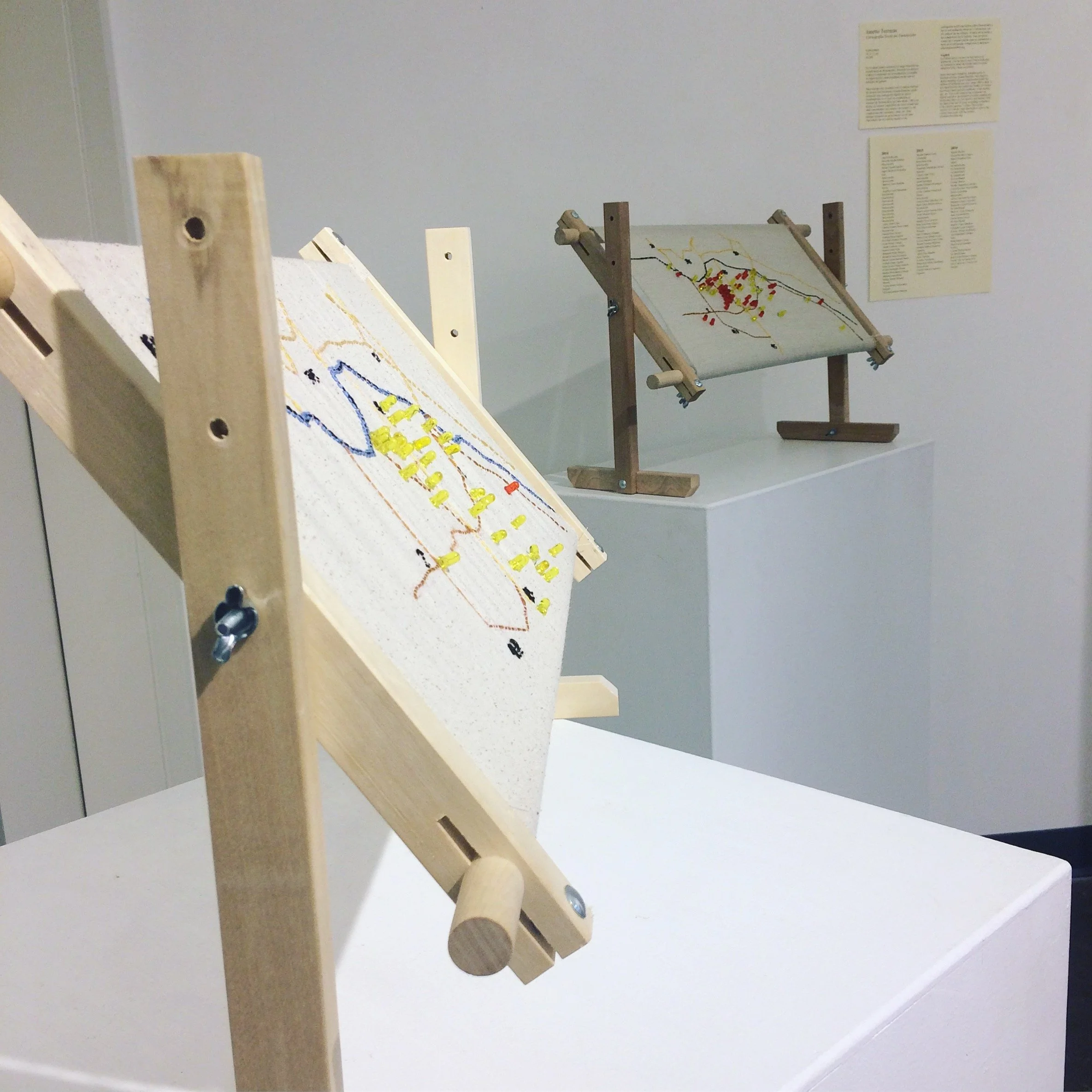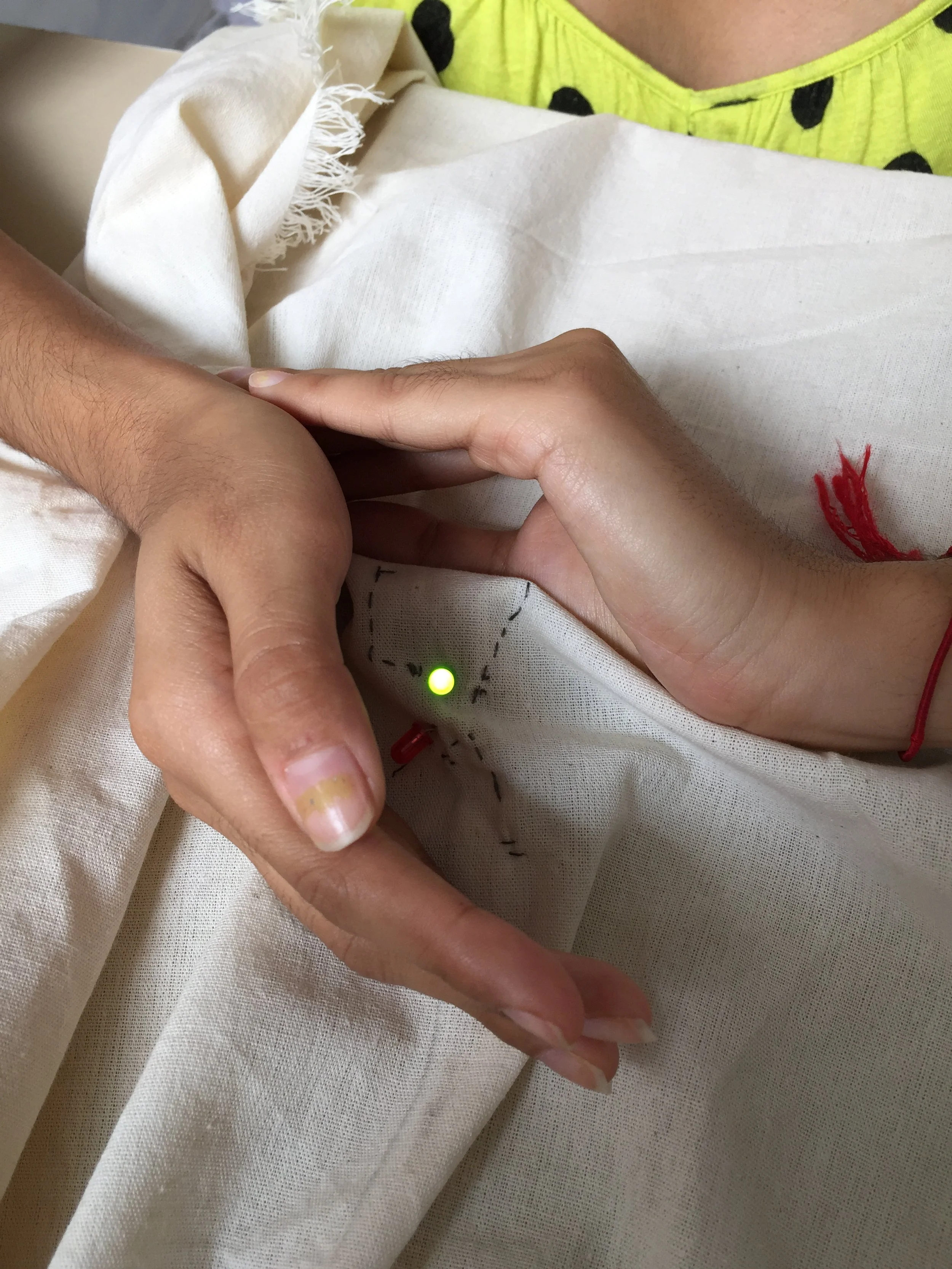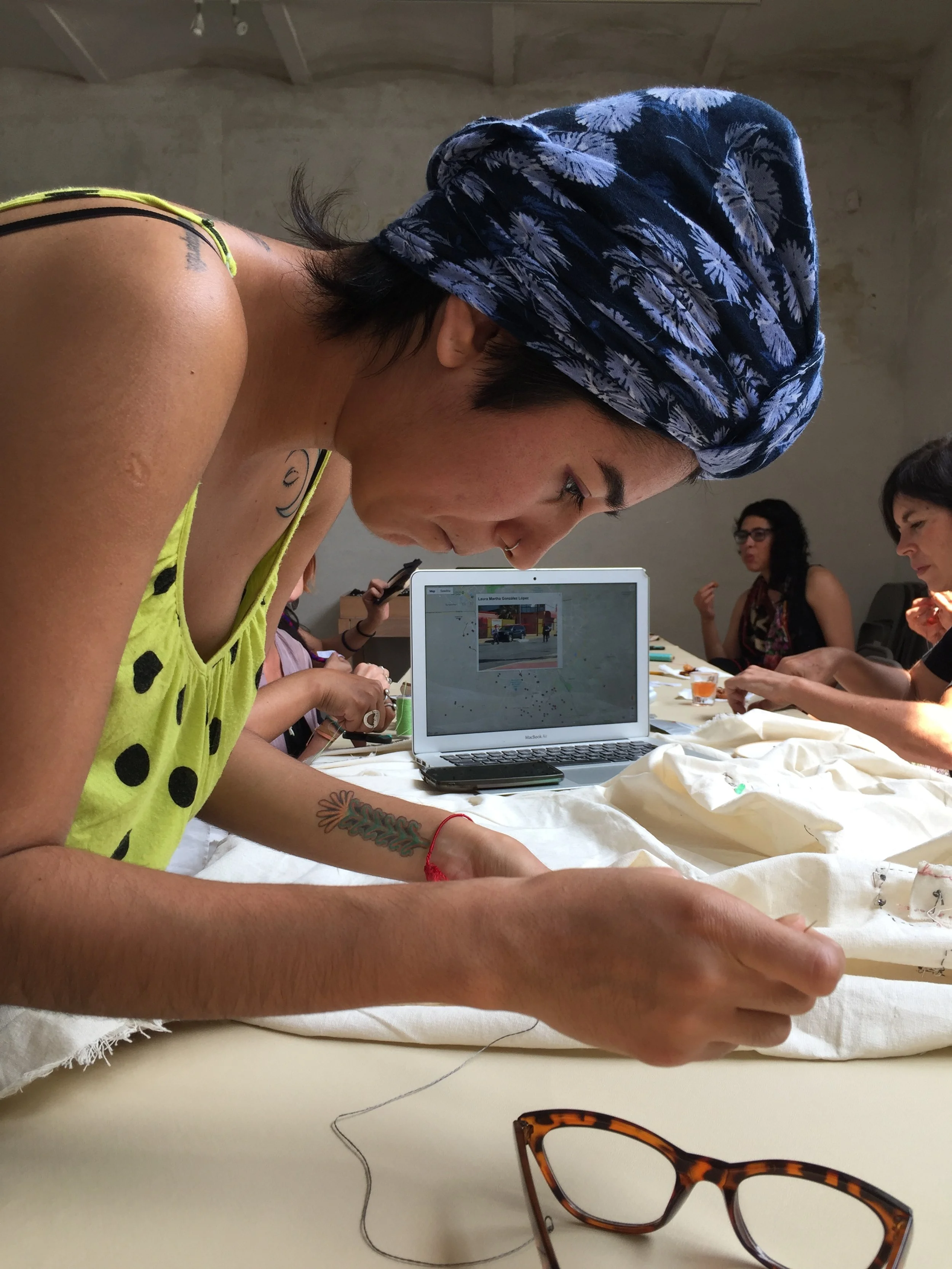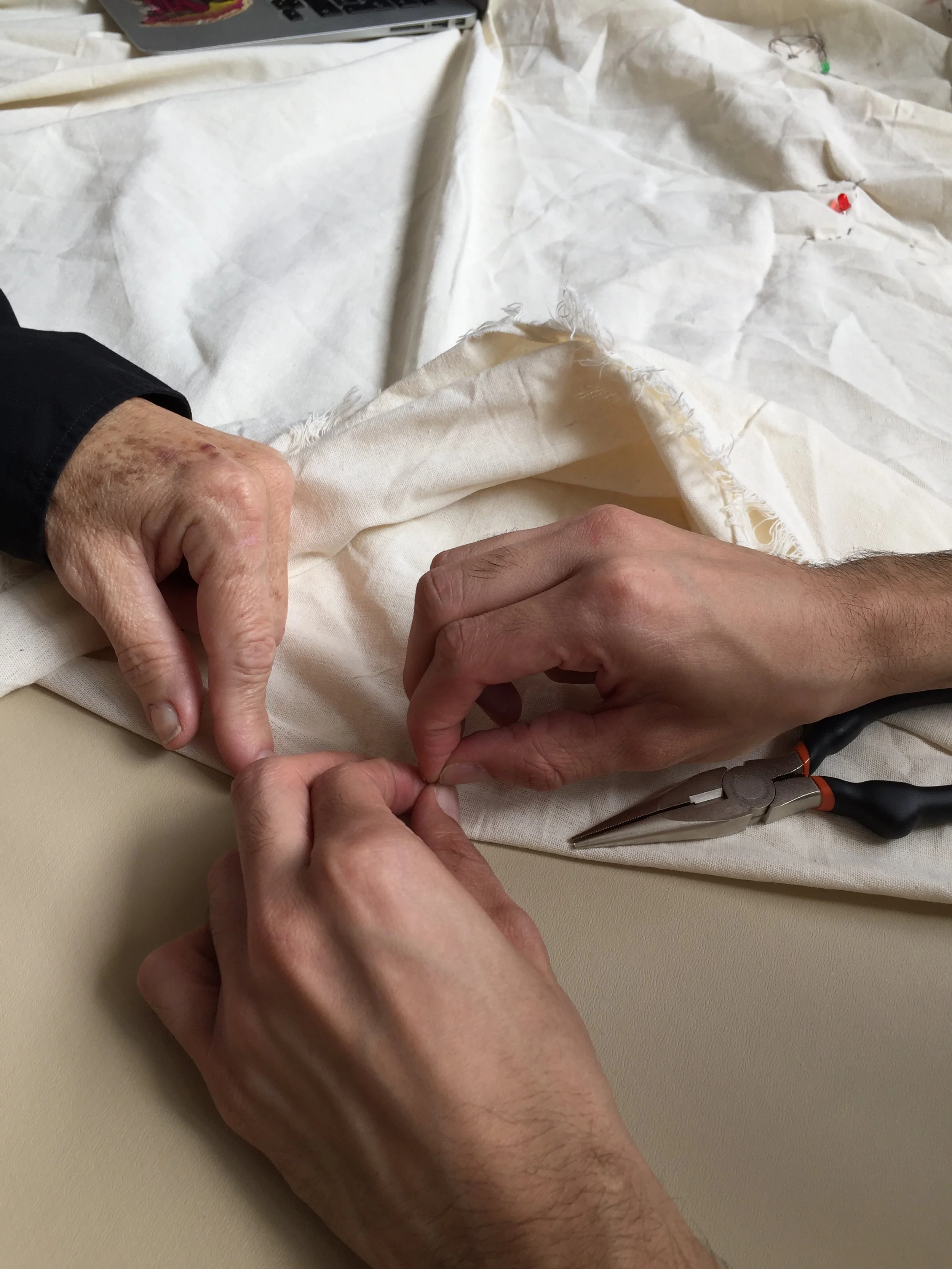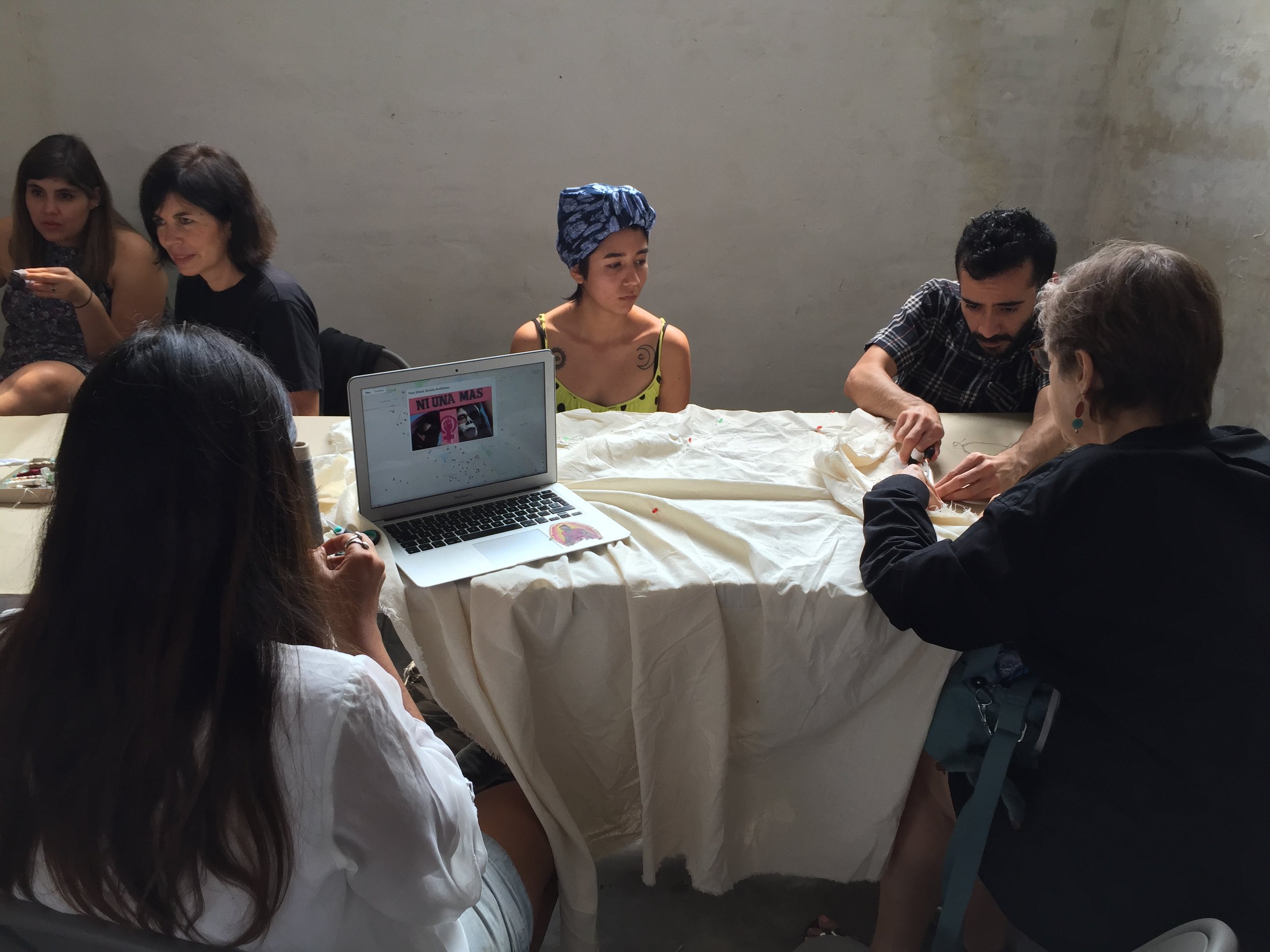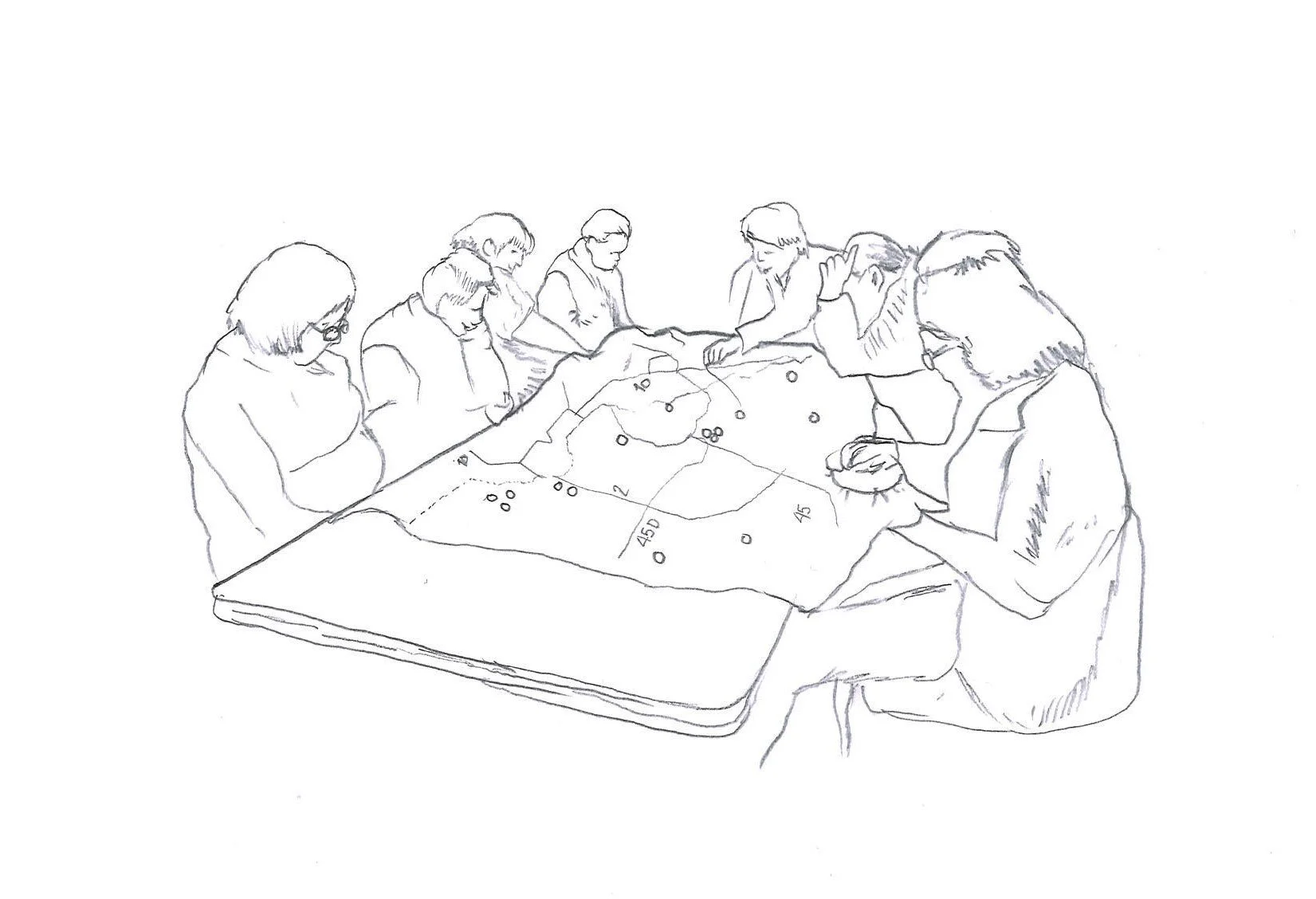
CARTOGRAPHY STUDIES
Over the past decade, my work has focused on studying textile objects as social metaphors, incorporating electrosensitive materials and natural prints. This exploration delves into themes such as violence, environmental racism, earth democracy, and eco-feminism, all interconnected in the border geopolitical context.
In researching materials, I discovered those integral to the border identity, emphasizing reuse. Electric components hold personal significance, given Juarez's numerous factories (up to 670) producing accessories and electrical appliances. Additionally, I began exploring botanical colors in the last decade, uncovering over a hundred color ranges. These colors, a gift of our mother’s sacred technology, reflect techniques used by ancestral pre-Hispanic cultures.
The resulting textile objects aim to urgently communicate and raise awareness about the challenges faced in border communities, addressing issues of frustration, exploitation, and precariousness.
Acuifier Cartographies
The history of the Rio Bravo and the region's aquifers is intricately tied to the development of the Rio Grande Rift, stemming from the stretching and rupture of the Earth's cortex, resulting in faults, and the submergence of the land through structural craters born from the cortex rupture. Astrid Lozano notes, "The water that reaches the underground can accumulate in these structural craters, eventually forming aquifers."
In our current climate, exacerbated by extractive practices in the walnut industry and cattle feed manufacturing, the majority of the region's aquifers struggle to replenish adequately, unable to offset the levels of exploitation. Water extraction significantly depletes reserves, and the presence of paved roads and concrete canals further impedes aquifer replenishment. Throughout history, the Rio Grande has played a vital role in recharging aquifers in Mesilla and the Valley of Juárez. Recognizing the inseparable relationship between the Rio Bravo and the surrounding mountains is crucial, as they collaborate to sustain the vast basin of the Rio Bravo/Grande.
This textile exploration places a particular focus on the nuances of water, highlighting the interconnectedness of present-future basins and sub-basins that traverse the territory. This emphasis serves as a poignant representation of the fading aquifer, affected by drought and recharge crises, impacting the Chihuahuan desert ecosystem. These crises extend to non-human interactions that contribute to balance and are vital for our survival.
Border Cartographies of SPECIES AND COLORS
The series comprises graphic and symbolic representations that explore the relationship between border spaces and environmental and political issues. Symbolic elements interconnect to reveal detailed information about endangered species, landscape degradation, and resource exploitation.
Symbolic Elements in Endangered Species
For instance, the Ocelot, a species threatened by the Mex-USA border wall, faces habitat loss, with fewer than 50 remaining in the border area.
The cactus, essential food for wild boars, struggles to reproduce as the wall restricts boars' movement and seed dispersion.
Additionally, the construction of the "La Gloria" copper mine by the Canadian company VVC Exploration Corporation threatens the ecologically and historically protected desert of Samalayuca. The extraction of copper oxide resources is anticipated through an open-pit process involving explosions, the application of solvents (such as sulfuric acid), and the utilization of substantial water quantities.
Historical Narrative of Environmental Impact
Newer iterations of this series highlight the historical narrative detailing the environmental impact attributed to the ASARCO metal smelter, which operated in the border city of El Paso, Texas, from 1899 to 2005. The new iterations of the series document contaminated sites in select areas of the Chihuahuan state of Mexico due to mining-related environmental emergencies, as well as georeferencing of natural sites facing imminent risks.
These issues are rooted in colonialism, neoliberalism, and globalization, affecting communities in Ciudad Juárez/El Paso by denying access to clean air, water, and species protection.
Using cotton/mexican manta, botanical dyes, QR textile codes, and electro-sensitive textiles, the series builds a narrative landscape of complaint-participation. Digital and exploratory land documentation processes are employed. The cartographies aim to raise awareness of current social-political issues, sparking curiosity among observers. Concrete data on environmental damage encourages active participation bridging art and science.
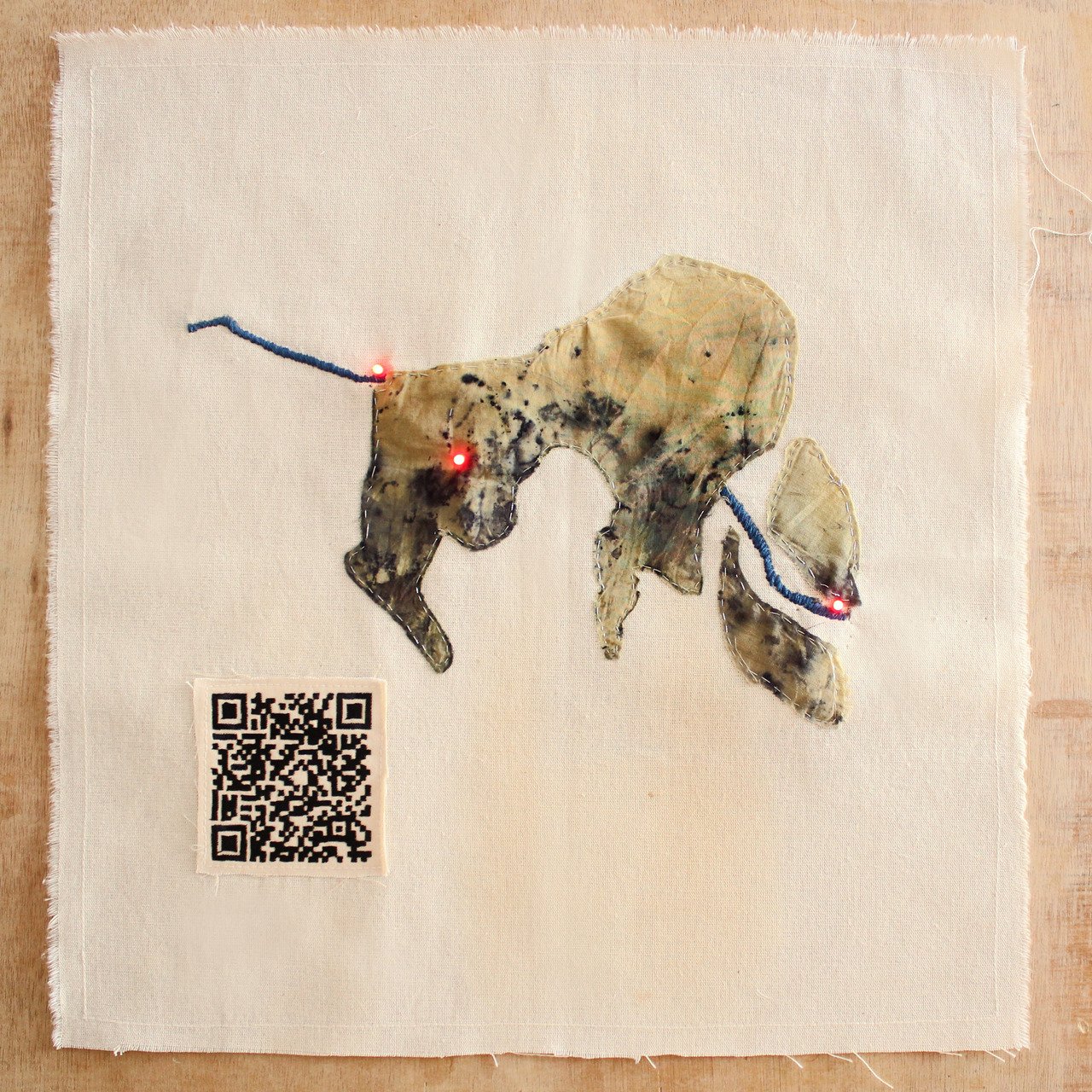




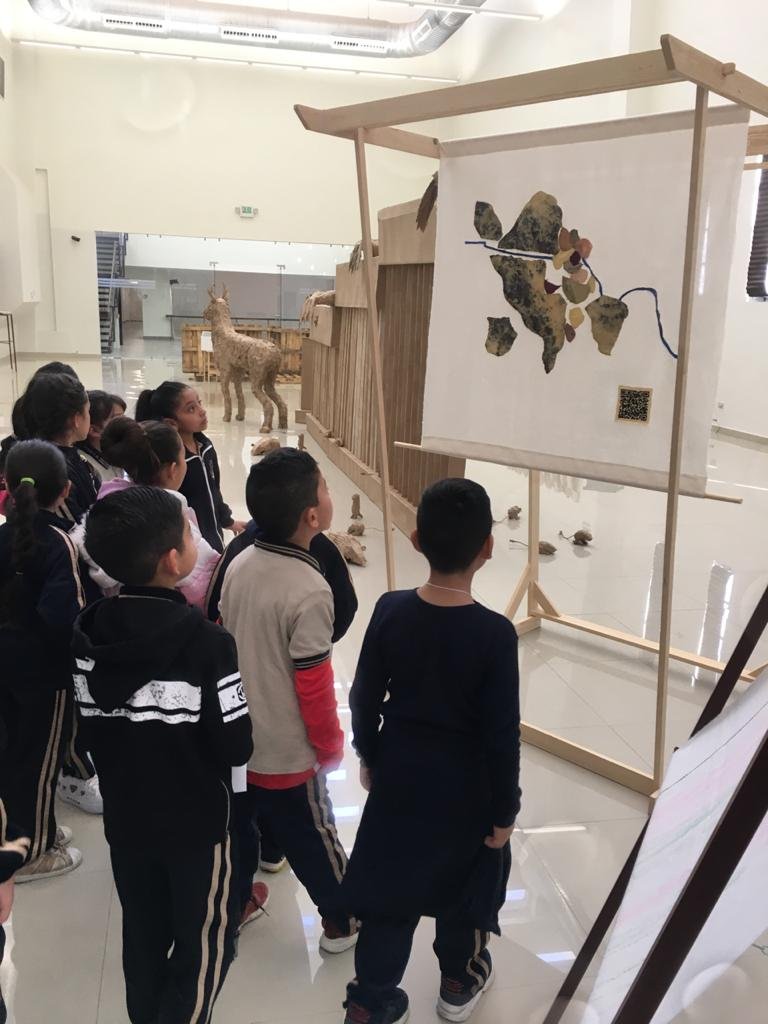
ELLAs tienen nombre
Transnational Struggles features the work of 36 artists from the United States and Mexico's border regions. The work on exhibit explores the theme of intersectionality in a border context and considers how power relations and forms of resistance manifest at the border. This exhibition explores the ways in which the border in both its physical and metaphorical presence is experienced by people of different races, classes, genders and sexualities. When we begin to see the border and its dynamic, as a catalyst for production, it is vital to understand how that production is both nurtured and hindered by our intersectional struggles. Exploring issues such as displacement, migration, labor, human rights, systemic violence, femicide and gentrification, the artwork exhibited here sheds light on the experiences of marginalized communities. As the geographic border becomes the focus of a dangerous political climate, the role of the artist as cultural producer and protector becomes fundamental in our struggle for justice.
Cartografia Textil del Feminicidio in collaboration with Ivonne Ramirez, 2017
To learn more, visit ellastienennombre.org
